Epika Earth / Rare Terra
Epika Earth / Artisan
 This is the final installment for the most recent batch of Epika Earth incenses I received in my most recent Etsy order. They have so, so many more sticks and other goodies at their actual website and I am absolutely sure I liked most of their offerings enough to go for another order again in the future. There is something really warm and comforting about a lot of them. Perhaps its because so many of their incenses are essential oil mixes, but I like how these often create almost mythical libations, like you’re holding some amazing drink in your hand. The last group of these incenses are a couple that look like they are part of a Sacred line, a couple that are not part of any line and look like standards, and then a few backflow cones were also sent which are a bit more difficult to talk about as I don’t like the format while on the other hand these would likely be tremendously good cones if they weren’t.
This is the final installment for the most recent batch of Epika Earth incenses I received in my most recent Etsy order. They have so, so many more sticks and other goodies at their actual website and I am absolutely sure I liked most of their offerings enough to go for another order again in the future. There is something really warm and comforting about a lot of them. Perhaps its because so many of their incenses are essential oil mixes, but I like how these often create almost mythical libations, like you’re holding some amazing drink in your hand. The last group of these incenses are a couple that look like they are part of a Sacred line, a couple that are not part of any line and look like standards, and then a few backflow cones were also sent which are a bit more difficult to talk about as I don’t like the format while on the other hand these would likely be tremendously good cones if they weren’t.
 So first of all we have the Celebration of Life stick (part of the Sacred line), which is different but obviously related in an aromatic way to the Celebration of Life dhoop that I discussed in the previous installment. The stick, naturally, is a much simpler blend but what I really love about it is it’s almost like some sort of mystical root beer or sarsaparilla in scent. Or add in cream soda, ginger ale or a plain old “suicide.” It’s a concoction reminiscent of all these things and maybe none of them. So maybe just mystical soda. However, when I looked this up to link on the Etsy site it was gone, and seemingly “replaced” by a 1 year aged version of the same blend. So while I don’t have the ingredients list on the original, I would imagine they would be like the aged version: frankincense, myrrh, cistus, benzoin resinoid, styrax resinoid, cinnamon, rose petals, helichrysum flowers, golden copal, white copal, Rose Bulgaria, agarwood, and sandalwood. And like in previous incenses you can see the styrax and copal which have often helped to give Epika Earth incenses this concoction like feel. I would imagine aging this would work in a similar way to the Cocoa Pods incense in the line, which certainly broadens the complexity of their incense, so it’s not hard to imagine this would improve and it’s already good thing. In the original I also got touches of chocolate, the rose and some apricot (which had me leaning more towards jasmine until I look at the contents). It wasn’t as spicy as the dhoop but they both share the wonderful brown sugar note that helps sweeten up the “soda.”
So first of all we have the Celebration of Life stick (part of the Sacred line), which is different but obviously related in an aromatic way to the Celebration of Life dhoop that I discussed in the previous installment. The stick, naturally, is a much simpler blend but what I really love about it is it’s almost like some sort of mystical root beer or sarsaparilla in scent. Or add in cream soda, ginger ale or a plain old “suicide.” It’s a concoction reminiscent of all these things and maybe none of them. So maybe just mystical soda. However, when I looked this up to link on the Etsy site it was gone, and seemingly “replaced” by a 1 year aged version of the same blend. So while I don’t have the ingredients list on the original, I would imagine they would be like the aged version: frankincense, myrrh, cistus, benzoin resinoid, styrax resinoid, cinnamon, rose petals, helichrysum flowers, golden copal, white copal, Rose Bulgaria, agarwood, and sandalwood. And like in previous incenses you can see the styrax and copal which have often helped to give Epika Earth incenses this concoction like feel. I would imagine aging this would work in a similar way to the Cocoa Pods incense in the line, which certainly broadens the complexity of their incense, so it’s not hard to imagine this would improve and it’s already good thing. In the original I also got touches of chocolate, the rose and some apricot (which had me leaning more towards jasmine until I look at the contents). It wasn’t as spicy as the dhoop but they both share the wonderful brown sugar note that helps sweeten up the “soda.”
 Gentle Beast appears to be one of Epika Earth’s standard line (or perhaps Artisan) and an incense a bit closer to those I usually associate with the dipped style, although we’re still not in territory where inferior or synthetic oils are used thankfully. However, this does appear to be a mix of a lot of different things, it’s both somewhat amber-like, herbal and having a noticeable vanilla note (see the tonka bean below), all of which is blended with a strong fruity mix that at different times smells like berries, apples, pineapple, mango or pears (seriously, all in my notes!) Among this mix are somewhat combinate reminders of anything from sage to patchouli and agave cactus. One of the reasons I mention all of these things is that the ingredients list looks a lot different (the incense was sent as an addition to my order from the company). Those are listed as: organic calendula, organic lavender, white copal, styrax resin, golden copal, dragon’s blood, sweet coconut milk, bergamot, pink pepper, cinnamon leaf, jasmine, tonka bean, blue cypress, cedarwood atlas and musk. I was considering a different incense the morning I typed this, in the sense that lavender can often be a bit of a sneak ingredient in all sorts of sticks as it can vary in intensity or style, but fronting resins isn’t an unknown method to get a fruity effect. I’d imagine the bergamot and other resins probably don’t hurt (I’m reminded of the apple in dragon’s blood sticks as well) either. Anyway, as you might imagine you might have a bit of fun trying to pick things out from what is basically an herbal-laced fruit concoction. And this is better than a lot of those, if perhaps as lacking in distinction as other fruity dipped mixes, although the herbal feel prevents that from going too far. [Note that the page I linked to describes this as a Rare Terra incense, so this may a case similar to the Celebration of Life where there’s a formula upgrade, but I ended up with an original. So keep this in mind with the link.]
Gentle Beast appears to be one of Epika Earth’s standard line (or perhaps Artisan) and an incense a bit closer to those I usually associate with the dipped style, although we’re still not in territory where inferior or synthetic oils are used thankfully. However, this does appear to be a mix of a lot of different things, it’s both somewhat amber-like, herbal and having a noticeable vanilla note (see the tonka bean below), all of which is blended with a strong fruity mix that at different times smells like berries, apples, pineapple, mango or pears (seriously, all in my notes!) Among this mix are somewhat combinate reminders of anything from sage to patchouli and agave cactus. One of the reasons I mention all of these things is that the ingredients list looks a lot different (the incense was sent as an addition to my order from the company). Those are listed as: organic calendula, organic lavender, white copal, styrax resin, golden copal, dragon’s blood, sweet coconut milk, bergamot, pink pepper, cinnamon leaf, jasmine, tonka bean, blue cypress, cedarwood atlas and musk. I was considering a different incense the morning I typed this, in the sense that lavender can often be a bit of a sneak ingredient in all sorts of sticks as it can vary in intensity or style, but fronting resins isn’t an unknown method to get a fruity effect. I’d imagine the bergamot and other resins probably don’t hurt (I’m reminded of the apple in dragon’s blood sticks as well) either. Anyway, as you might imagine you might have a bit of fun trying to pick things out from what is basically an herbal-laced fruit concoction. And this is better than a lot of those, if perhaps as lacking in distinction as other fruity dipped mixes, although the herbal feel prevents that from going too far. [Note that the page I linked to describes this as a Rare Terra incense, so this may a case similar to the Celebration of Life where there’s a formula upgrade, but I ended up with an original. So keep this in mind with the link.]
 The Sacred Amber is a quiet but familiar amber incense. It still has the concoction-like mix of most of the incenses in the Epika Earth catalog I have tried. The issue of course is that I would not normally describe amber in the context of essential oils in at least that so many amber incenses or notes often could be considered dry, powdery or otherwise (often even if perfumes are reaching for this). But with that said this does have a noticeable amber note. I wondered if this might have been an older stock as there is a slight charcoal note that peaks through that must be from the base. And hey when you look at the ingredients (rock rose extract, patchouli, vetiver, sandalwood, frankincense, myrrh, liquidamber, cedarwood, amber resin, black pepper) you can see that the amber scents do lean in the concoction direction. The positives of this one is that it’s a very gentle scent but I think that allows some of the ingredients to maybe push away from the amber a bit. All of that is OK, it’s more saying that while this is a nice incense, I’d describe it more as an amber variant, than something purer than that. But we’re still talking about a scent pretty close to familiar dipped incenses rather than the more breathtaking experiments we’ve discussed previously.
The Sacred Amber is a quiet but familiar amber incense. It still has the concoction-like mix of most of the incenses in the Epika Earth catalog I have tried. The issue of course is that I would not normally describe amber in the context of essential oils in at least that so many amber incenses or notes often could be considered dry, powdery or otherwise (often even if perfumes are reaching for this). But with that said this does have a noticeable amber note. I wondered if this might have been an older stock as there is a slight charcoal note that peaks through that must be from the base. And hey when you look at the ingredients (rock rose extract, patchouli, vetiver, sandalwood, frankincense, myrrh, liquidamber, cedarwood, amber resin, black pepper) you can see that the amber scents do lean in the concoction direction. The positives of this one is that it’s a very gentle scent but I think that allows some of the ingredients to maybe push away from the amber a bit. All of that is OK, it’s more saying that while this is a nice incense, I’d describe it more as an amber variant, than something purer than that. But we’re still talking about a scent pretty close to familiar dipped incenses rather than the more breathtaking experiments we’ve discussed previously.
 Stormfire Tea has the concoction idea right at the forefront. It is sort of in the same direction as the Shoyeido Xiang-Do (red) Tea, although this does not have the same sort of tea leaf resolution that the Shoyeido stick has. In some ways it’s not all that far from the Sacred Amber. The reddish color hints more at an herbal spiced tea and like the Sacred Amber it has a mild spicy middle to it. Interestingly, the ingredients include organic lavender flowers, organic white tea, cedar, birch tar resinoid, golden copal, styrax and sandalwood, and so the incense’s spicy notes don’t seem to come from the usual suspects as much, although I’d guess the woods probably provide some of these things. The cedar is pretty obvious in the mix, providing something of a southwestern note to the incense and the copal and styrax obviously help with pushing this over to an actual tea scent. It’s probably not my favorite of the Epika Earth incenses that remind me of drinks, but they still always do a good job with them and this will likely be found comforting and warming.
Stormfire Tea has the concoction idea right at the forefront. It is sort of in the same direction as the Shoyeido Xiang-Do (red) Tea, although this does not have the same sort of tea leaf resolution that the Shoyeido stick has. In some ways it’s not all that far from the Sacred Amber. The reddish color hints more at an herbal spiced tea and like the Sacred Amber it has a mild spicy middle to it. Interestingly, the ingredients include organic lavender flowers, organic white tea, cedar, birch tar resinoid, golden copal, styrax and sandalwood, and so the incense’s spicy notes don’t seem to come from the usual suspects as much, although I’d guess the woods probably provide some of these things. The cedar is pretty obvious in the mix, providing something of a southwestern note to the incense and the copal and styrax obviously help with pushing this over to an actual tea scent. It’s probably not my favorite of the Epika Earth incenses that remind me of drinks, but they still always do a good job with them and this will likely be found comforting and warming.
 Epika Earth were also kind enough to send no less than three different kinds of backflow cones. As I offered to review their incenses prior to their seeing the information on our website, I thought I’d use this opportunity to talk about these types of cones first as they’ve grown in popularity since they started showing up however many years back. The simple idea for a backflow cone is a hole is drilled down the center and “something” is added to the mix in order to make the smoke heavy enough to come down through the hole and drift slowly down any number of artistically designed backflow holders. It’s absolutely understandable why people would think this is cool, as smoke pouring from a ceramic chimney or dragon’s mouth is a neat effect. I even bought a cool dragon backflow holder which I managed to break in the middle of these reviews, chipping off just the right spot (one of the dragon wings) that should have held the smoke in. But the thing is, even in practice you have to do a lot of shifting and have a lot of patience for the smoke of a burning backflow cone to make it all the way down to the bottom of a cascade. For me the smoke never got farther than the first slide after the dragon’s mouth and I think I got one cone to get all the way down to the bottom once.
Epika Earth were also kind enough to send no less than three different kinds of backflow cones. As I offered to review their incenses prior to their seeing the information on our website, I thought I’d use this opportunity to talk about these types of cones first as they’ve grown in popularity since they started showing up however many years back. The simple idea for a backflow cone is a hole is drilled down the center and “something” is added to the mix in order to make the smoke heavy enough to come down through the hole and drift slowly down any number of artistically designed backflow holders. It’s absolutely understandable why people would think this is cool, as smoke pouring from a ceramic chimney or dragon’s mouth is a neat effect. I even bought a cool dragon backflow holder which I managed to break in the middle of these reviews, chipping off just the right spot (one of the dragon wings) that should have held the smoke in. But the thing is, even in practice you have to do a lot of shifting and have a lot of patience for the smoke of a burning backflow cone to make it all the way down to the bottom of a cascade. For me the smoke never got farther than the first slide after the dragon’s mouth and I think I got one cone to get all the way down to the bottom once.
Whatever is the case, information on backflow cones seems pretty confusing on the internet. There are lots of claims of these types of cones that they don’t use any chemicals and yet there has to be a difference between smoke that rises and smoke that sinks (and usually stinks). I would imagine this is just chemistry and physics. There also has to be some sort of reasoning for the abominable smells during and left after the burning of some of these cones on a backflow burner. The ones that came with my burner were absolutely awful and I even tried a Tibetan backflow cone which had the exact same issue. And then you can read on internet, recipes for these cones that are made no differently from a regular cone, at least as far as I can tell. My experience with backflow cones is not widespread but I can tell you I’ve never smelled one that didn’t have some sort of additive, whatever it may be.
And that’s no different for these three Epika Earth cones, although I will say I didn’t notice the same sort of foulness left from them that I did with the burner samples or the Tibetan incense I mentioned above. What I felt was disappointed simply because the mixes were actually really nice on these, but there seemed to be something in the mix that I associated with the sort of alcohol scent you can get with some of the oils except quite a bit stronger. For like the tip of the cone you’re good but then once it gets, I assume, to where the drilled hole goes down each cone, it started to get a bit too much for my tastes. Now I’ll be fair I’ve had this happen with a lot of non-backflow cones as well. I’ve never thought the cone was a satisfying format for an incense and it often felt this way perhaps because you need more makko or binder so the cone keeps its shape, or at least nearly every cone I’ve used gets irritating by the time it’s wide and down to the base. So I am probably not a cone’s intended audience.
And so reviewing three or four cones of these is not fully possible, both because there is a strength here that overwhelms any subtleties but also because that strength overwhelms me as well (and let me remind you I am usually OK with some of the loudest Indian incenses on the market). It is a strange experience going from wow that’s a really lovely scent to throat irritation and stinging eyes all in one cone burn, but that’s what each one of these does. The Angel Blood (dragon’s blood, styrax and patchouli) cones were first and I honestly absolutely loved the sort of dragon’s blood and styrax sweet “candy” mixed with some earthier patchouli. At first I was like wow someone made a backflow cone I really like, but then it ended at the first dragon slide and I got overwhelmed. I then broke the burner and had to sample the Rhubarb Berry and Oakmoss cone on one of my ash burners. Again at first I was really impressed, as all three (?) scents (the aroma profile is described as agave covered berries, rhubarb and black plum with highlights of fir needle and oakmoss) in a wonderful mix were really clear. Perhaps burning it away from a backflow burner helped mitigate the strength as it wound down but I was still sensing a lot of heavy alcohol and some sort of unknown scent towards the end that wasn’t agreeing with me. Saved for last since I don’t normally go for palo santo was the Winter Juniper & Palo Santo cone. This aroma profile is described as palo santo wood and juniper berries freshly thawed after a winter freeze. Triple coated with palo santo wood powder, sandalwood powder, golden copal resin and sweet myrrh. Strangely though on this one I don’t really get juniper or palo santo at all, which struck me as odd as the ingredients list on an Epika Earth incense can usually easily be identified. But again it started quite pleasant and was literally stinging my eyes by the end of it.
So to sum this up, these last three cones are obviously for people who love backflow cones and in that context they’re certainly better than nearly every other cone I’ve tried in the style, they’re clearly artisan and made with love. And of course I’d reiterate that I really enjoyed nearly every stick and dhoop I reviewed in all three installments, enough that I made an exception to my no dipped incense reviews rule. Epika Earth have certainly carved out a unique space in the incense community and I look forward to trying more of their scents. If you have tried any other of their incenses and wish to contribute, please post in the thread below!
 It has been a really long time since I did new reviews of Nepali or Tibetan-style Indian incenses. In the current era I don’t know if there is one dominant shopping point for these types of incenses like there was when Essence of the Ages was active, although Hither & Yon in Hawaii is a good source for lines like Dhoop Factory and you can usually find a lot of the more common Nepali incenses through places like Incense Warehouse. The problem, which is something I don’t think you find in actual Tibetan incenses, is there are a lot of poor Nepali incenses. When I explored them back in the 00s I ended up getting rid of a great deal of them because they were basically just unpleasant and cheap woody incenses without much in the way of aroma. The worst felt like bad perfumes on junk sawdust. But of course this isn’t true of all of them (several of the Dhoop Factory incenses are upper echelon Tibetan-style incenses in my book). Nowadays there are a number of smaller shops on the internet and across Etsy that actually show there are multiple traditions (or maybe exporters) of these sorts of incenses. I even dug up what appears to be a rather interesting line of perfumed Tibetan-style incenses sources in India. So I got busy and have ordered quite a few Nepali incenses, just mostly going on intuition to pick things out. Along the way I’ve also rediscovered sources for things I reviewed way back and will update those accordingly. The first two here are incenses handmade in Nepal for California’s Chagdud Gonpa Foundation. Both of these can be found at the Tibetan Treasures online shop.
It has been a really long time since I did new reviews of Nepali or Tibetan-style Indian incenses. In the current era I don’t know if there is one dominant shopping point for these types of incenses like there was when Essence of the Ages was active, although Hither & Yon in Hawaii is a good source for lines like Dhoop Factory and you can usually find a lot of the more common Nepali incenses through places like Incense Warehouse. The problem, which is something I don’t think you find in actual Tibetan incenses, is there are a lot of poor Nepali incenses. When I explored them back in the 00s I ended up getting rid of a great deal of them because they were basically just unpleasant and cheap woody incenses without much in the way of aroma. The worst felt like bad perfumes on junk sawdust. But of course this isn’t true of all of them (several of the Dhoop Factory incenses are upper echelon Tibetan-style incenses in my book). Nowadays there are a number of smaller shops on the internet and across Etsy that actually show there are multiple traditions (or maybe exporters) of these sorts of incenses. I even dug up what appears to be a rather interesting line of perfumed Tibetan-style incenses sources in India. So I got busy and have ordered quite a few Nepali incenses, just mostly going on intuition to pick things out. Along the way I’ve also rediscovered sources for things I reviewed way back and will update those accordingly. The first two here are incenses handmade in Nepal for California’s Chagdud Gonpa Foundation. Both of these can be found at the Tibetan Treasures online shop.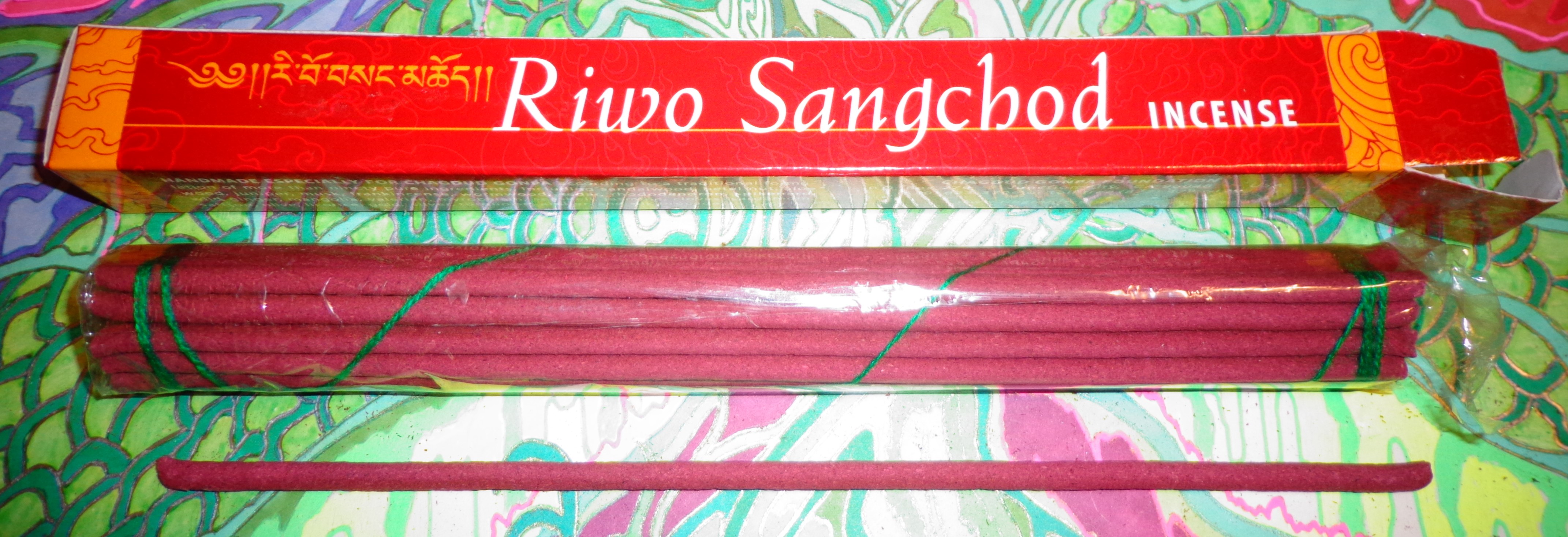 Riwo Sangchod reminds me most of the Tashi Lhunpo Shing Kham Kun Khyab red stick I reviewed almost 16 years ago, although since it’s been that long I would imagine this one isn’t quite as deluxe. It’s possibly the Nepali equivalent of a Bhutani red stick (there are two Riwo Sangchod incenses from Bhutan in the Tibetan Treasures catalog as well) but obviously having a completely different scent profile. It has an impressive list of more than ninety ingredients, including sandalwood, betel nut, aloeswood, juniper, musk, frankincense, wormwood, cedar, rhododendron, spikenard, wild ginger, magnolia, valerian, myrobalan, seashell, jasmine, cloves, cardamom, saffron, olive, licorice, gold, silver, turquoise, amber, and silk brocade. And as you can imagine, with such an impressive list of ingredients (I think this is my first with turquoise or silk brocade!), everything has been blended down to a completely composite aroma, one that is friendly and sweet on top while still having quite a bit of complexity swirling around beneath. Like in Bhutanese incenses, this has characteristics I’d describe as woody and berry-like all at once, it’s clearly not a Tibetan secret to pair these aspects together as they’re always a really friendly match. This isn’t a spectacular incense, I wouldn’t even call any of the Bhutanese equivalents spectacular either, but what they are is light and really accessible. And at least in this case the ingredients feel up to snuff and not at all watered down. Several sticks of this more or less confirmed my static opinion of this one, but keep in mind what I said about the complexity, some of the subscents churn underneath and show up in different temperatures so this one isn’t being phoned in. The subtle woodiness is quite nice here.
Riwo Sangchod reminds me most of the Tashi Lhunpo Shing Kham Kun Khyab red stick I reviewed almost 16 years ago, although since it’s been that long I would imagine this one isn’t quite as deluxe. It’s possibly the Nepali equivalent of a Bhutani red stick (there are two Riwo Sangchod incenses from Bhutan in the Tibetan Treasures catalog as well) but obviously having a completely different scent profile. It has an impressive list of more than ninety ingredients, including sandalwood, betel nut, aloeswood, juniper, musk, frankincense, wormwood, cedar, rhododendron, spikenard, wild ginger, magnolia, valerian, myrobalan, seashell, jasmine, cloves, cardamom, saffron, olive, licorice, gold, silver, turquoise, amber, and silk brocade. And as you can imagine, with such an impressive list of ingredients (I think this is my first with turquoise or silk brocade!), everything has been blended down to a completely composite aroma, one that is friendly and sweet on top while still having quite a bit of complexity swirling around beneath. Like in Bhutanese incenses, this has characteristics I’d describe as woody and berry-like all at once, it’s clearly not a Tibetan secret to pair these aspects together as they’re always a really friendly match. This isn’t a spectacular incense, I wouldn’t even call any of the Bhutanese equivalents spectacular either, but what they are is light and really accessible. And at least in this case the ingredients feel up to snuff and not at all watered down. Several sticks of this more or less confirmed my static opinion of this one, but keep in mind what I said about the complexity, some of the subscents churn underneath and show up in different temperatures so this one isn’t being phoned in. The subtle woodiness is quite nice here. Perhaps even more impressive than the Riwo Sangchod is Chagdud Gonpa Foundations’s Unsurpassable Healing Incense, one of the few Nepali incenses that actually approaches the level of some of the better Tibetan incenses. Thanks to the categories here I found that this was also in Anne’s Top 10 in 2011! It has a similar ingredient profile to the Riwo Sangchod, with juniper, white and red sandalwood, saffron, valerian, magnolia, musk, aloeswood, myrobalan, olive, jasmine, clove, rhododendron, powdered seashell, frankincense, licorice, cuttlefish bone, wild ginger, betel nut, and powdered alabaster, but even though there are some similarities to the berry/woody mix of that incense, the ingredients add up to something a lot more complex. The first thing I get is some top layer of peppery spice. Second the middle with the woods and saffron. There’s definitely some musk in the mix which is almost entirely absent or at least not noticeably present in most Nepali incenses. As the smoke spreads out more of the incense’s floral notes come out a bit more as well as what seems like a bit of an agarwood note. It only remains noticeably Nepalese by the base which, despite all the other ingredients, still seems a bit (too?) high in juniper or some other cheap sawdust content. Also present are some of the notes found in the Riwo Sangchod as if the incense fractalizes at times. Ultimately there is really a lot going on this one and it can be intensely fascinating to realize that it might take some time to see it at as recognizable rather than ever-changing. In fact I really liked Anne’s description of this as an “all rounder,” it’s almost the perfect way to summarize it in a couple of words. Recommended for the patient.
Perhaps even more impressive than the Riwo Sangchod is Chagdud Gonpa Foundations’s Unsurpassable Healing Incense, one of the few Nepali incenses that actually approaches the level of some of the better Tibetan incenses. Thanks to the categories here I found that this was also in Anne’s Top 10 in 2011! It has a similar ingredient profile to the Riwo Sangchod, with juniper, white and red sandalwood, saffron, valerian, magnolia, musk, aloeswood, myrobalan, olive, jasmine, clove, rhododendron, powdered seashell, frankincense, licorice, cuttlefish bone, wild ginger, betel nut, and powdered alabaster, but even though there are some similarities to the berry/woody mix of that incense, the ingredients add up to something a lot more complex. The first thing I get is some top layer of peppery spice. Second the middle with the woods and saffron. There’s definitely some musk in the mix which is almost entirely absent or at least not noticeably present in most Nepali incenses. As the smoke spreads out more of the incense’s floral notes come out a bit more as well as what seems like a bit of an agarwood note. It only remains noticeably Nepalese by the base which, despite all the other ingredients, still seems a bit (too?) high in juniper or some other cheap sawdust content. Also present are some of the notes found in the Riwo Sangchod as if the incense fractalizes at times. Ultimately there is really a lot going on this one and it can be intensely fascinating to realize that it might take some time to see it at as recognizable rather than ever-changing. In fact I really liked Anne’s description of this as an “all rounder,” it’s almost the perfect way to summarize it in a couple of words. Recommended for the patient. This is the final installment for the most recent batch of Epika Earth incenses I received in my most recent Etsy order. They have so, so many more sticks and other goodies at their actual website and I am absolutely sure I liked most of their offerings enough to go for another order again in the future. There is something really warm and comforting about a lot of them. Perhaps its because so many of their incenses are essential oil mixes, but I like how these often create almost mythical libations, like you’re holding some amazing drink in your hand. The last group of these incenses are a couple that look like they are part of a Sacred line, a couple that are not part of any line and look like standards, and then a few backflow cones were also sent which are a bit more difficult to talk about as I don’t like the format while on the other hand these would likely be tremendously good cones if they weren’t.
This is the final installment for the most recent batch of Epika Earth incenses I received in my most recent Etsy order. They have so, so many more sticks and other goodies at their actual website and I am absolutely sure I liked most of their offerings enough to go for another order again in the future. There is something really warm and comforting about a lot of them. Perhaps its because so many of their incenses are essential oil mixes, but I like how these often create almost mythical libations, like you’re holding some amazing drink in your hand. The last group of these incenses are a couple that look like they are part of a Sacred line, a couple that are not part of any line and look like standards, and then a few backflow cones were also sent which are a bit more difficult to talk about as I don’t like the format while on the other hand these would likely be tremendously good cones if they weren’t. So first of all we have the Celebration of Life stick (part of the Sacred line), which is different but obviously related in an aromatic way to the
So first of all we have the Celebration of Life stick (part of the Sacred line), which is different but obviously related in an aromatic way to the 
 The
The 
 Epika Earth were also kind enough to send no less than three different kinds of backflow cones. As I offered to review their incenses prior to their seeing the information on our website, I thought I’d use this opportunity to talk about these types of cones first as they’ve grown in popularity since they started showing up however many years back. The simple idea for a backflow cone is a hole is drilled down the center and “something” is added to the mix in order to make the smoke heavy enough to come down through the hole and drift slowly down any number of artistically designed backflow holders. It’s absolutely understandable why people would think this is cool, as smoke pouring from a ceramic chimney or dragon’s mouth is a neat effect. I even bought a cool dragon backflow holder which I managed to break in the middle of these reviews, chipping off just the right spot (one of the dragon wings) that should have held the smoke in. But the thing is, even in practice you have to do a lot of shifting and have a lot of patience for the smoke of a burning backflow cone to make it all the way down to the bottom of a cascade. For me the smoke never got farther than the first slide after the dragon’s mouth and I think I got one cone to get all the way down to the bottom once.
Epika Earth were also kind enough to send no less than three different kinds of backflow cones. As I offered to review their incenses prior to their seeing the information on our website, I thought I’d use this opportunity to talk about these types of cones first as they’ve grown in popularity since they started showing up however many years back. The simple idea for a backflow cone is a hole is drilled down the center and “something” is added to the mix in order to make the smoke heavy enough to come down through the hole and drift slowly down any number of artistically designed backflow holders. It’s absolutely understandable why people would think this is cool, as smoke pouring from a ceramic chimney or dragon’s mouth is a neat effect. I even bought a cool dragon backflow holder which I managed to break in the middle of these reviews, chipping off just the right spot (one of the dragon wings) that should have held the smoke in. But the thing is, even in practice you have to do a lot of shifting and have a lot of patience for the smoke of a burning backflow cone to make it all the way down to the bottom of a cascade. For me the smoke never got farther than the first slide after the dragon’s mouth and I think I got one cone to get all the way down to the bottom once. The second installment of Epika Earth incenses are a group of incenses labelled Artisan, three sticks and one incense in “dhoop” form. Based on a different incense on the line, Epika Earth describe these: “Our artisan blends are made entirely with natural ingredients that include essential oils, extracts, resinoids, woods and herbs. While creating the extracts, essential oils and crafting our artisan blends we use our own proprietary methods to protect and maximize the aroma of the ingredients in order to bring you the pure scents of earth in incense form.”
The second installment of Epika Earth incenses are a group of incenses labelled Artisan, three sticks and one incense in “dhoop” form. Based on a different incense on the line, Epika Earth describe these: “Our artisan blends are made entirely with natural ingredients that include essential oils, extracts, resinoids, woods and herbs. While creating the extracts, essential oils and crafting our artisan blends we use our own proprietary methods to protect and maximize the aroma of the ingredients in order to bring you the pure scents of earth in incense form.”



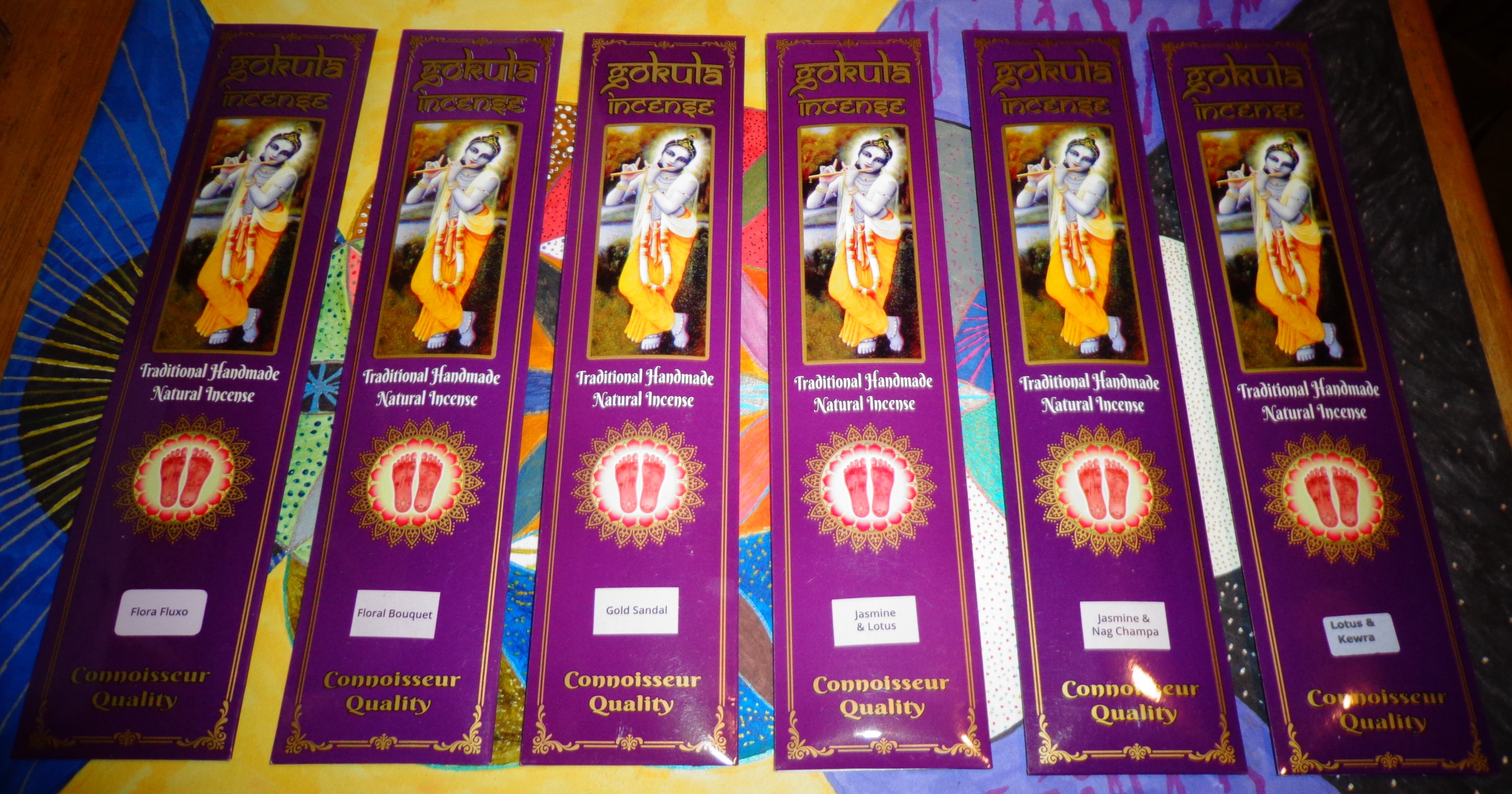 This is the second of four in a series of Gokula Incense reviews, please see the first installment for an introduction to the company.
This is the second of four in a series of Gokula Incense reviews, please see the first installment for an introduction to the company.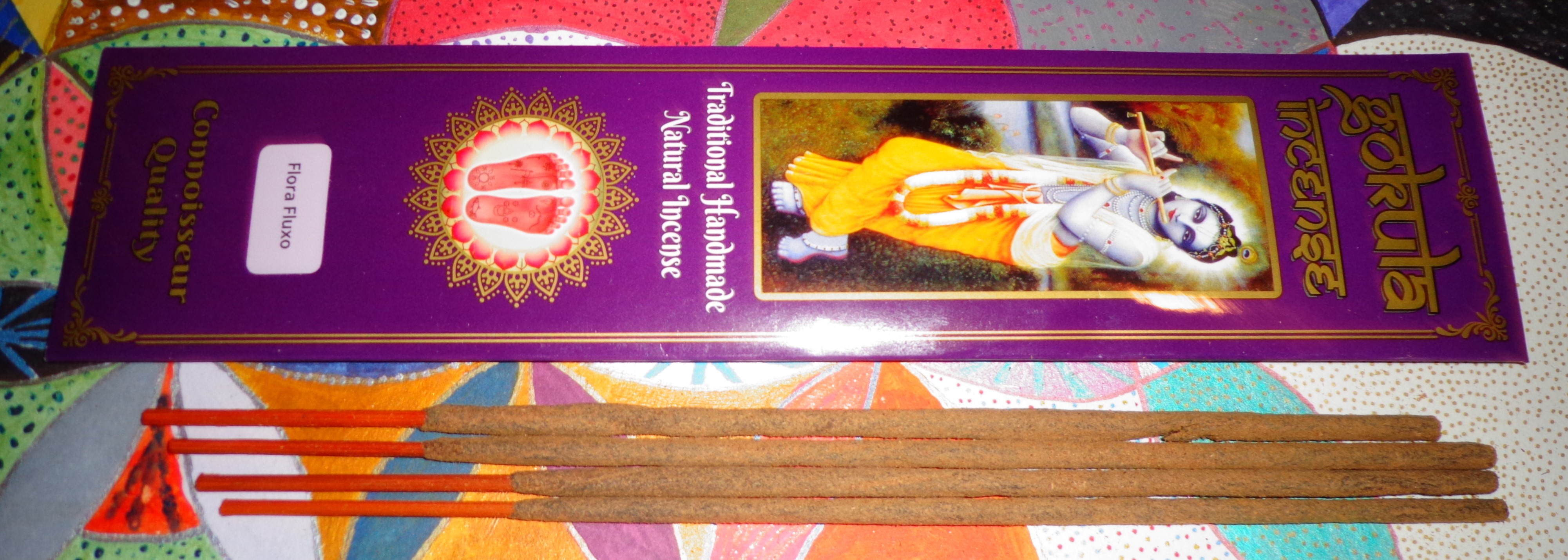 My general impression of flora/fluxo incenses is they usually come with an orange dipped stick (either full or just the end). And Gokula’s variant (one of them really) is actually called
My general impression of flora/fluxo incenses is they usually come with an orange dipped stick (either full or just the end). And Gokula’s variant (one of them really) is actually called 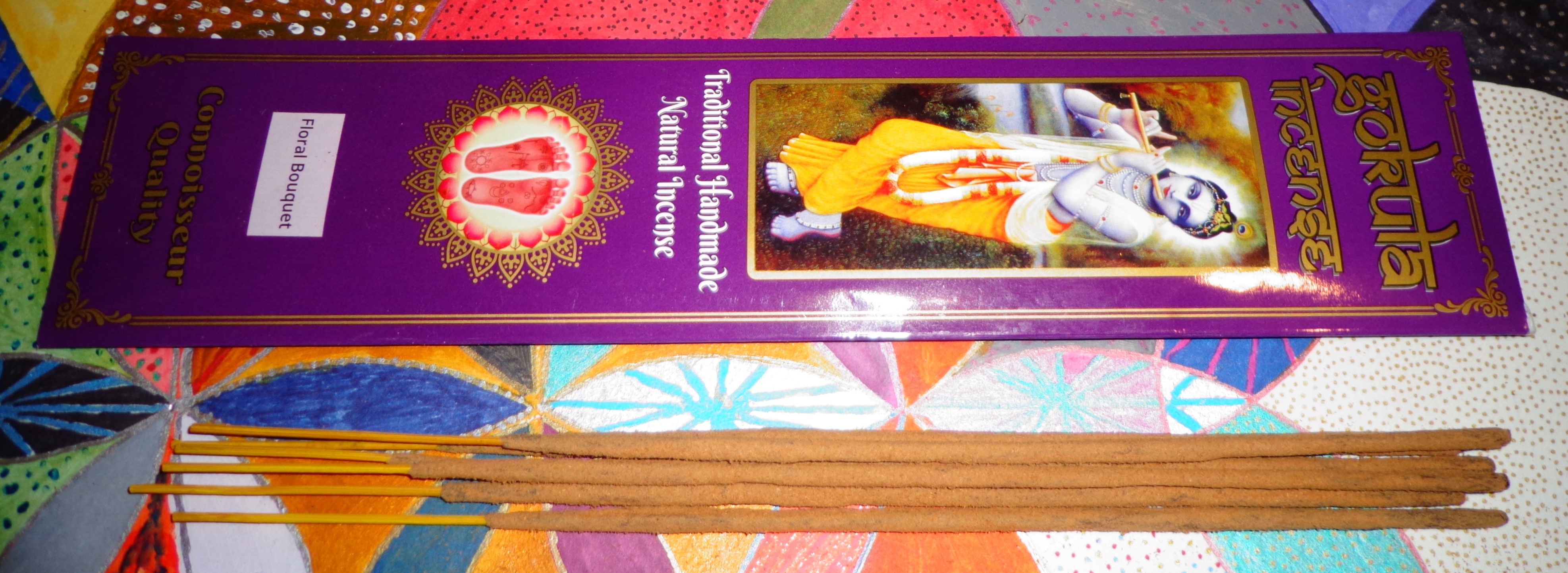
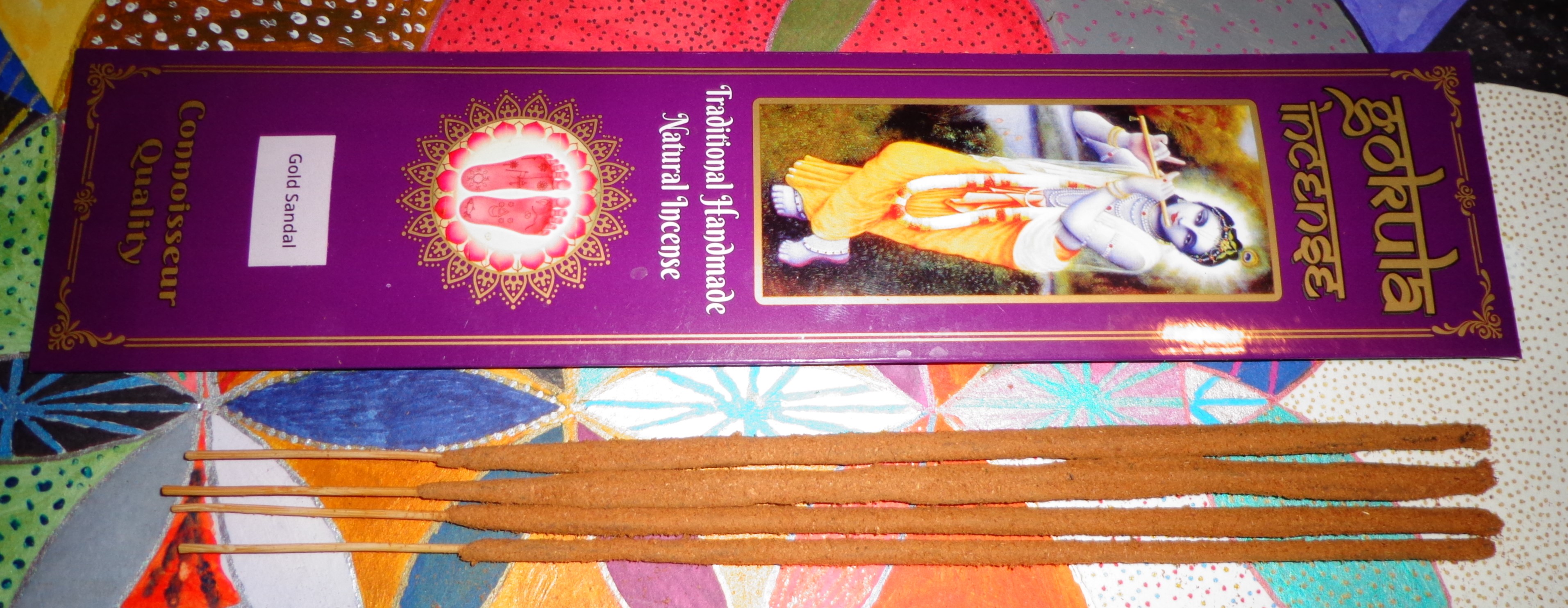
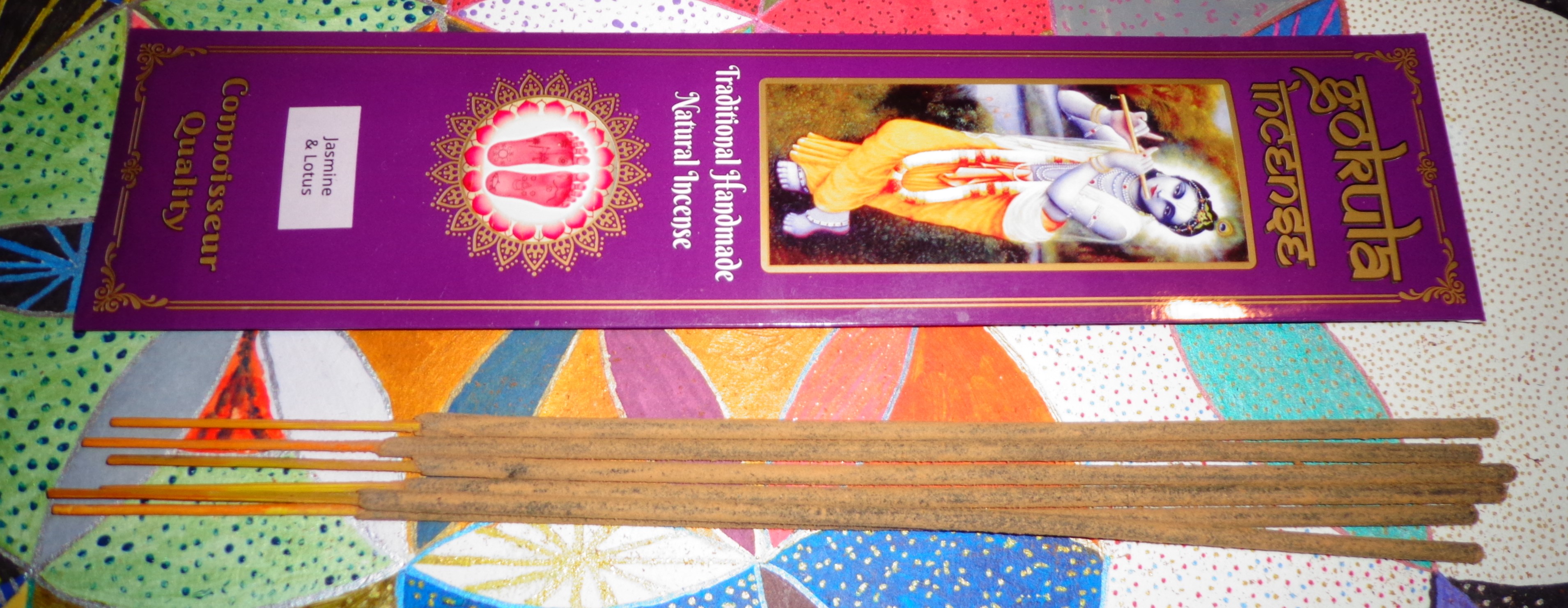 Even though I am going in alphabetical order, the next three incenses share quite a few of the same ingredients and operate very closely in style. The
Even though I am going in alphabetical order, the next three incenses share quite a few of the same ingredients and operate very closely in style. The 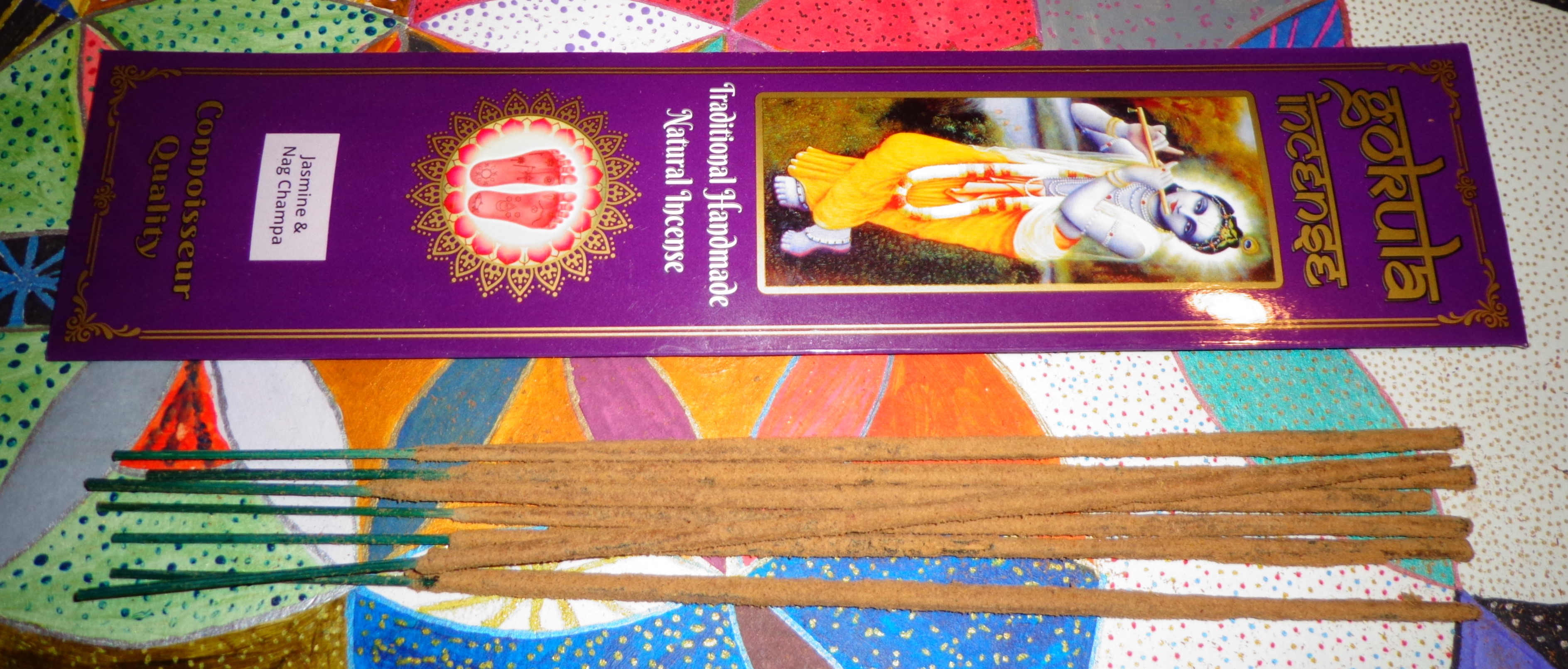 And better yet, the
And better yet, the 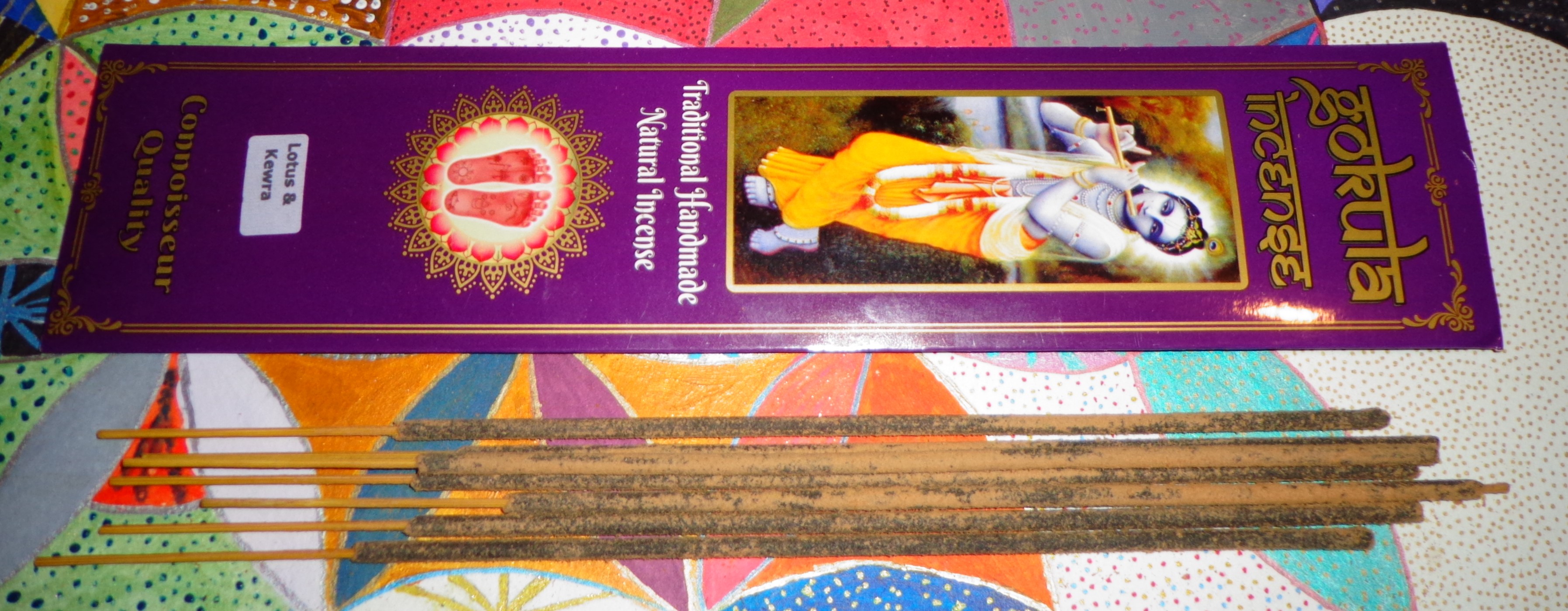 Finally the
Finally the 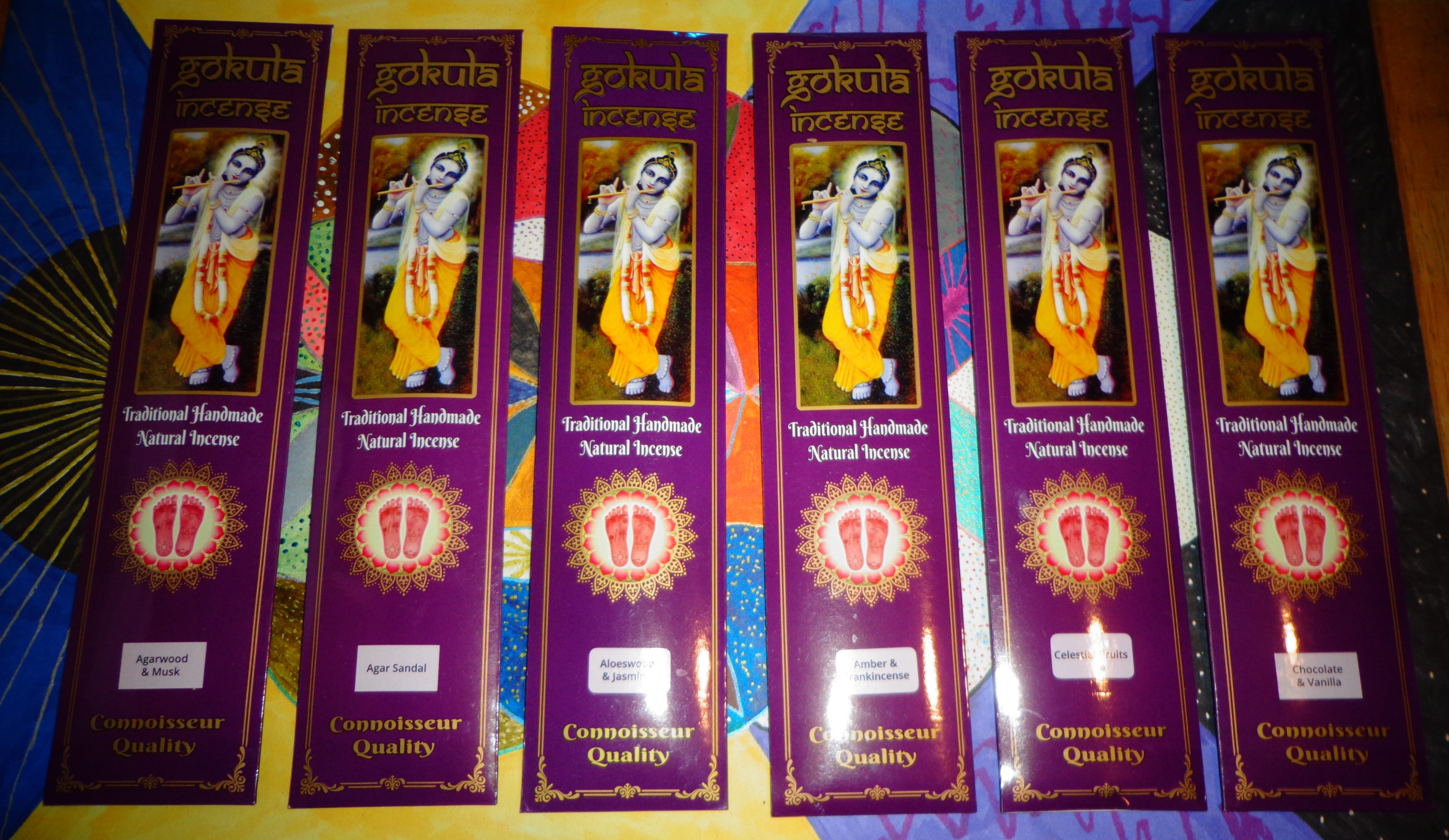 With the assistance of a reader, I made a 24-incense order of Gokula incense earlier in the year, basically all of the ones I was informed were not sourced by the Madhavadas family as these often overlap with other companies like Pure Incense. So these are divided into four reviews of six incenses each. My order arrived somewhere in the middle of several early orders to Vedic Vaani which largely eclipsed my entire incense year and while I went through all of the Gokulas, it felt like a good idea to sample and then let them rest a bit and come back to them with a fresh nose. With some exceptions in either direction, Gokula import a lot of decent scents and I might generally rate this half of the line as being on par with some of the Prabhuji’s Gifts incenses. All of these came in 20g packages although I do believe 250g bundles are also available. In my experience Gokula scents are either dusted charcoals almost entirely made from oil mixes or a step into masalas with occasional incenses being a bit softer to the touch.
With the assistance of a reader, I made a 24-incense order of Gokula incense earlier in the year, basically all of the ones I was informed were not sourced by the Madhavadas family as these often overlap with other companies like Pure Incense. So these are divided into four reviews of six incenses each. My order arrived somewhere in the middle of several early orders to Vedic Vaani which largely eclipsed my entire incense year and while I went through all of the Gokulas, it felt like a good idea to sample and then let them rest a bit and come back to them with a fresh nose. With some exceptions in either direction, Gokula import a lot of decent scents and I might generally rate this half of the line as being on par with some of the Prabhuji’s Gifts incenses. All of these came in 20g packages although I do believe 250g bundles are also available. In my experience Gokula scents are either dusted charcoals almost entirely made from oil mixes or a step into masalas with occasional incenses being a bit softer to the touch. So up front we’ll start with a trio of aloeswood/agarwood incenses. The
So up front we’ll start with a trio of aloeswood/agarwood incenses. The  On the fresh
On the fresh  I will admit that I am at a place in incense life where jasmine incenses are getting on my nerves, no matter how good they are, so I may not be the best judge of
I will admit that I am at a place in incense life where jasmine incenses are getting on my nerves, no matter how good they are, so I may not be the best judge of 
 With
With 
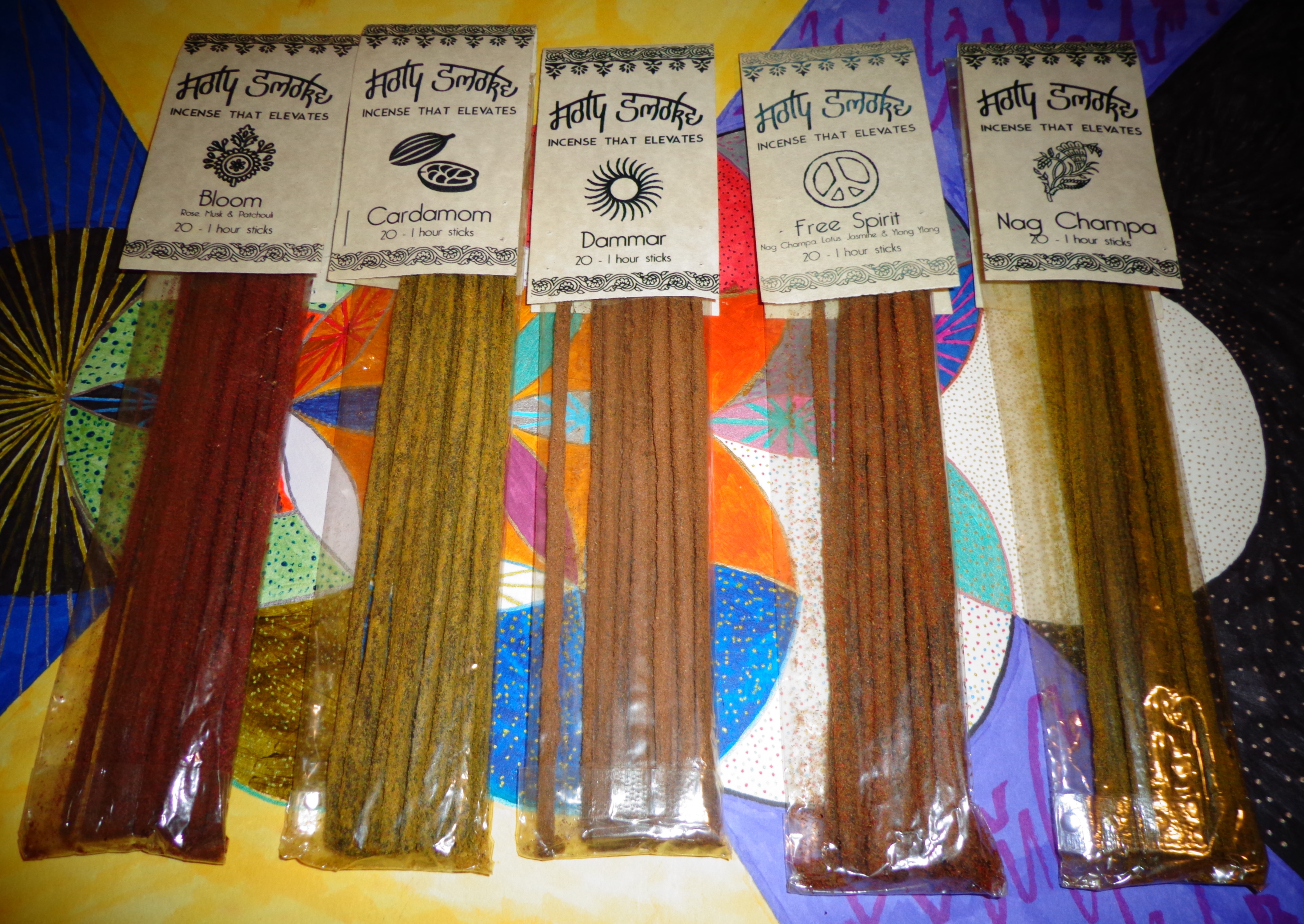 Holy Smoke is the name of a domestic incense creator that can be found on both
Holy Smoke is the name of a domestic incense creator that can be found on both 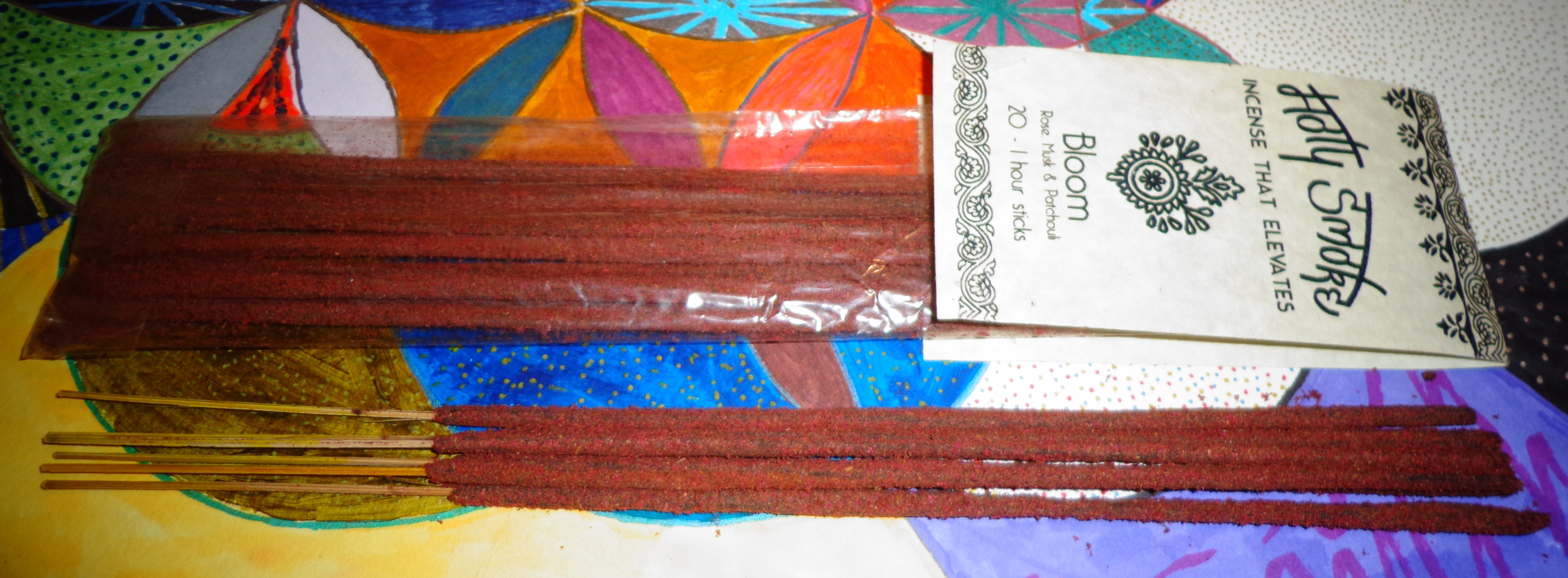 So that lovely purple color on the
So that lovely purple color on the 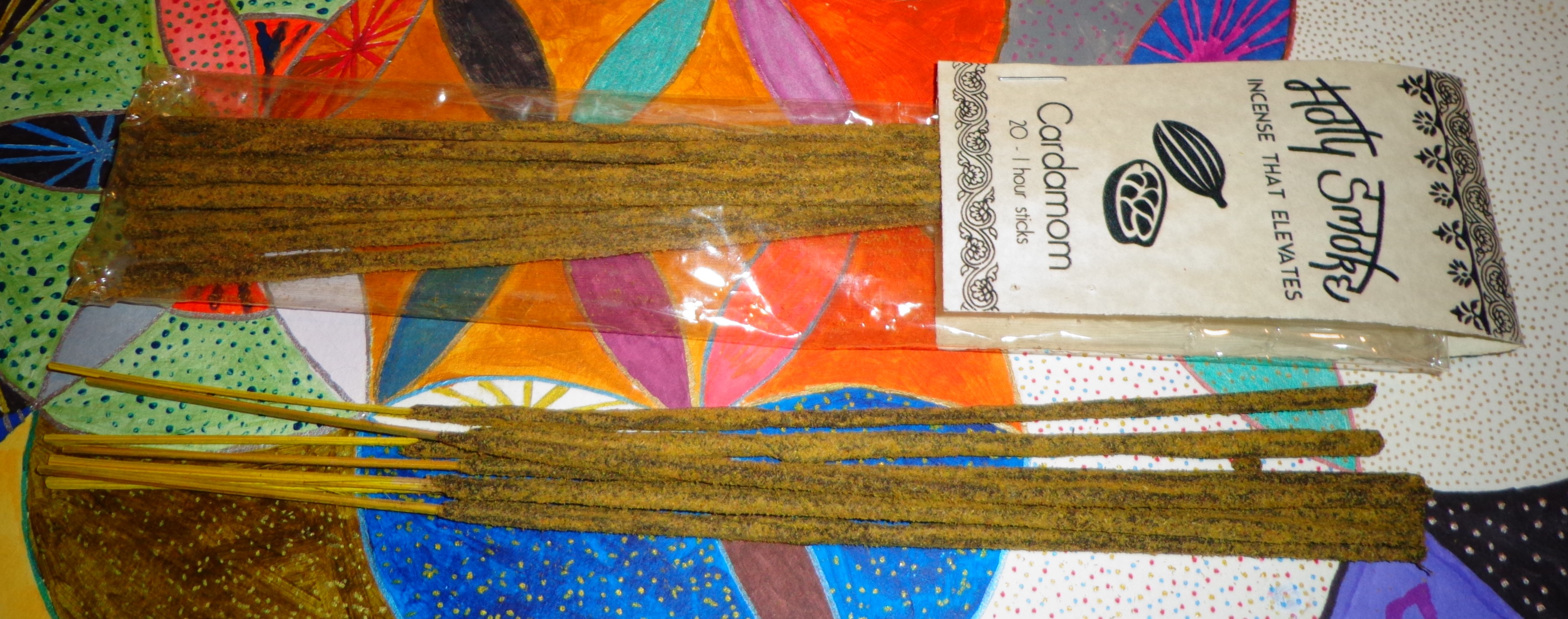 The
The 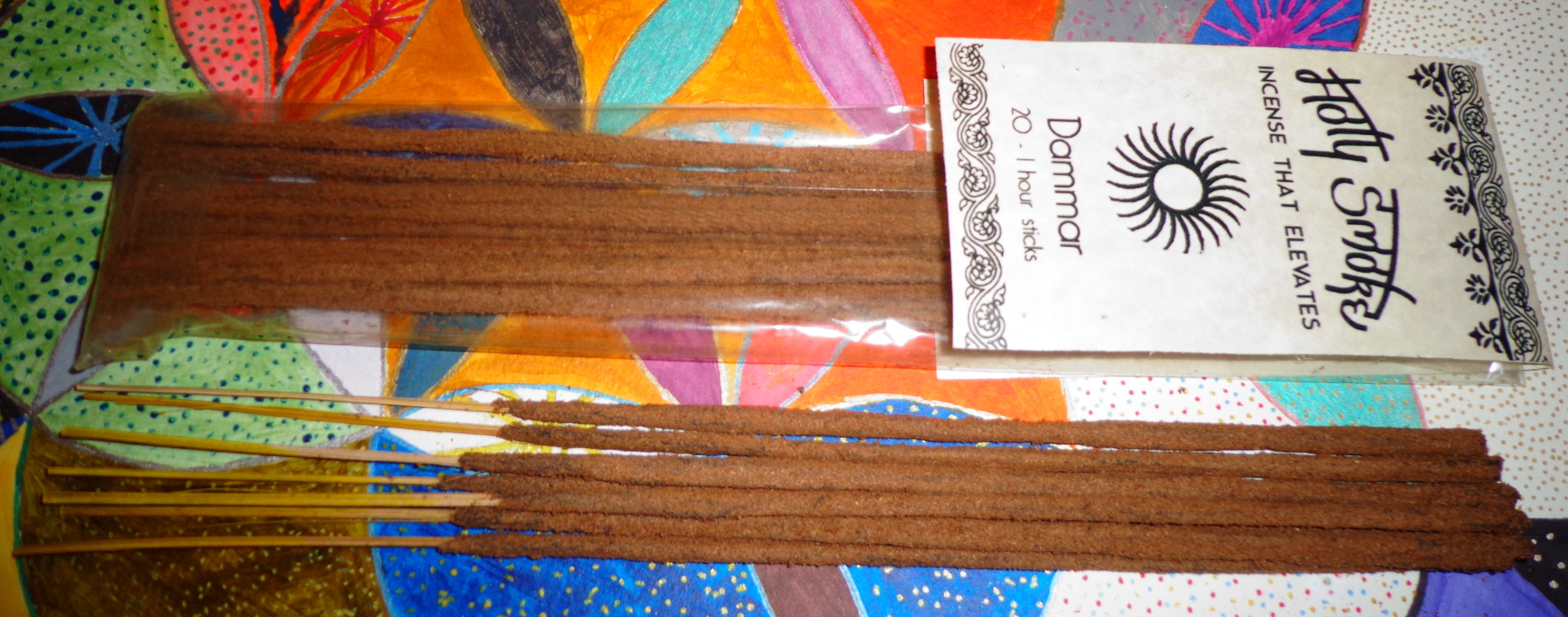 Part of the issue with incenses whose essential oil mixes are this loud is they tend to resemble household products and that’s the main issue with Dammar, an incense with a resin whose lemon-like tendencies push the overall aroma into furniture polish territory. The thing is, where in the Cardamom I could detect some level of actual resin burning here, the lemon characteristics supposedly coming from this resin all seem to be on the oil level. The issue is that it feels a bit chemical on some level in the sense where fruitiness in an air freshener or cleaning product ends up being too cloying. This also runs into having a bit of a bitter edge to it. Unfortunately, it has probably been a while since I tried the actual resin to see how close it is but it seems like here there’s much more going on than just the resin. I don’t mean to doubt the creators claim that these are all natural but sometimes the mixes can still perhaps not work quite as well.
Part of the issue with incenses whose essential oil mixes are this loud is they tend to resemble household products and that’s the main issue with Dammar, an incense with a resin whose lemon-like tendencies push the overall aroma into furniture polish territory. The thing is, where in the Cardamom I could detect some level of actual resin burning here, the lemon characteristics supposedly coming from this resin all seem to be on the oil level. The issue is that it feels a bit chemical on some level in the sense where fruitiness in an air freshener or cleaning product ends up being too cloying. This also runs into having a bit of a bitter edge to it. Unfortunately, it has probably been a while since I tried the actual resin to see how close it is but it seems like here there’s much more going on than just the resin. I don’t mean to doubt the creators claim that these are all natural but sometimes the mixes can still perhaps not work quite as well.

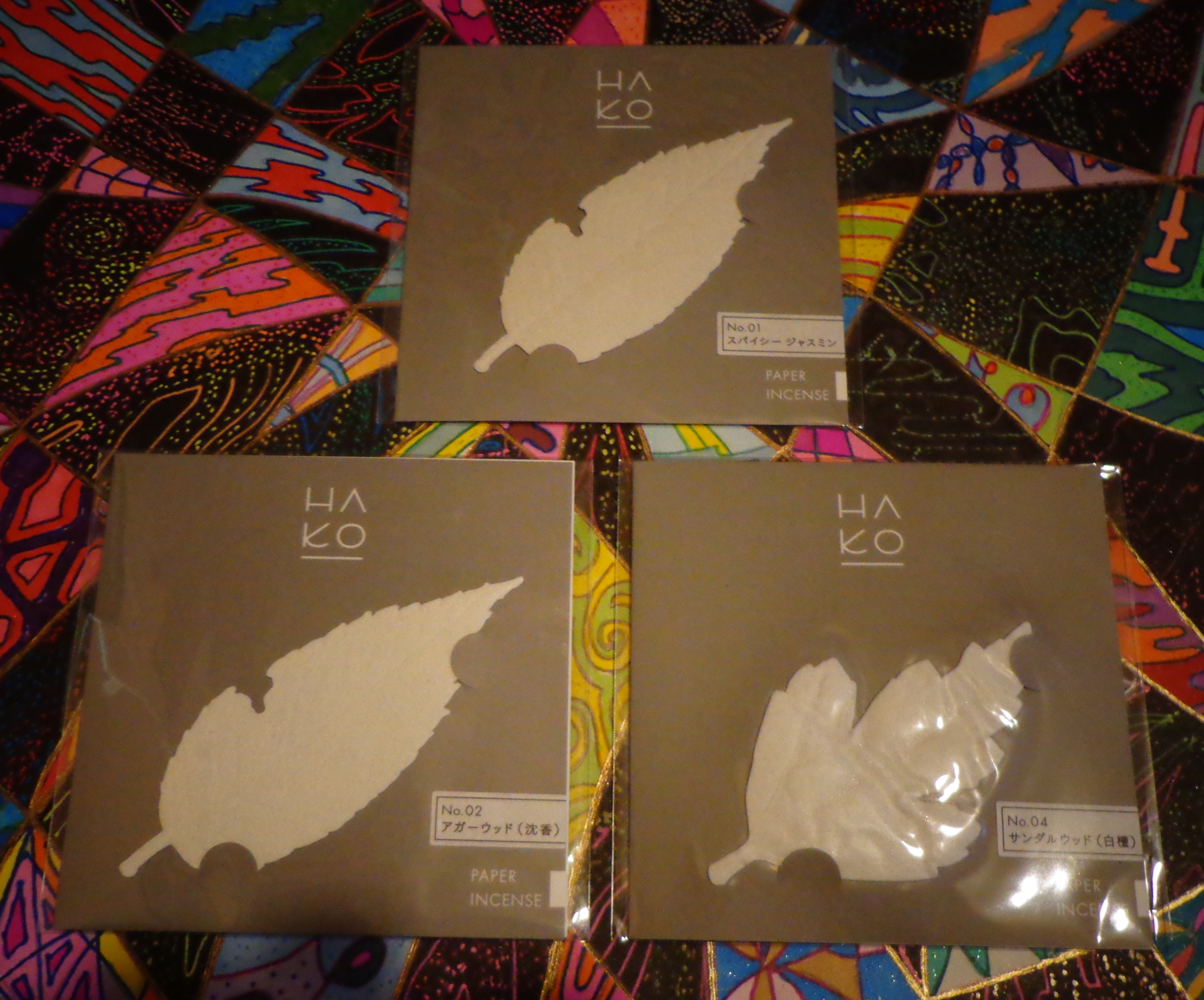 Japan Incense sent over these three beautifully designed paper incense leaves to review. Honestly as soon as I looked at their delicate construction, I had some hesitance in even wanting to burn them, the art and aesthetics seem so perfect (I love the delicate notches and details on the leaves). Second, I am getting to be of the age that if I’m burning incense and something else happens, like I get a call from work or there’s some sort of minor crisis to resolve at my place, etc., I can immediately forget what I am burning and come back with it depleted. I only had one chance at these really, so I needed to be ready. It’s one thing when you lose a daily stick, no worries, but man when that happens and it’s a kyara or something, it can be highly disappointing to be distracted. So, gulp, I took photos and wrote all of this before even lit a tip. Keep in mind as well that I am not sure if this qualifies as a “sampler notes” but since they all appear to be part of a
Japan Incense sent over these three beautifully designed paper incense leaves to review. Honestly as soon as I looked at their delicate construction, I had some hesitance in even wanting to burn them, the art and aesthetics seem so perfect (I love the delicate notches and details on the leaves). Second, I am getting to be of the age that if I’m burning incense and something else happens, like I get a call from work or there’s some sort of minor crisis to resolve at my place, etc., I can immediately forget what I am burning and come back with it depleted. I only had one chance at these really, so I needed to be ready. It’s one thing when you lose a daily stick, no worries, but man when that happens and it’s a kyara or something, it can be highly disappointing to be distracted. So, gulp, I took photos and wrote all of this before even lit a tip. Keep in mind as well that I am not sure if this qualifies as a “sampler notes” but since they all appear to be part of a 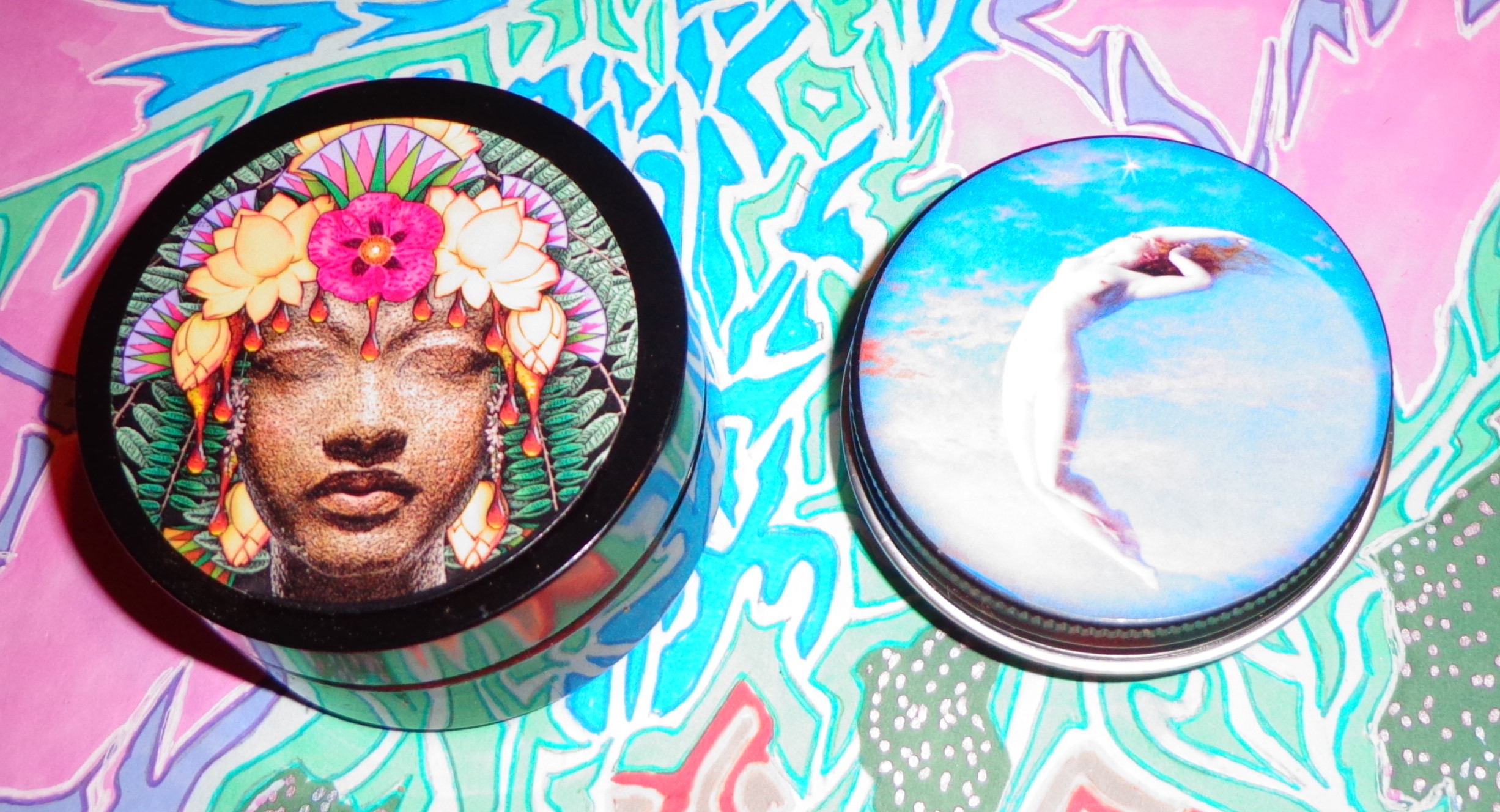 There’s a virtual history of Mermade kyphis being reviewed at ORS going back to 2011 (and a much longer tradition of Mermade making them) if you take a look at our
There’s a virtual history of Mermade kyphis being reviewed at ORS going back to 2011 (and a much longer tradition of Mermade making them) if you take a look at our 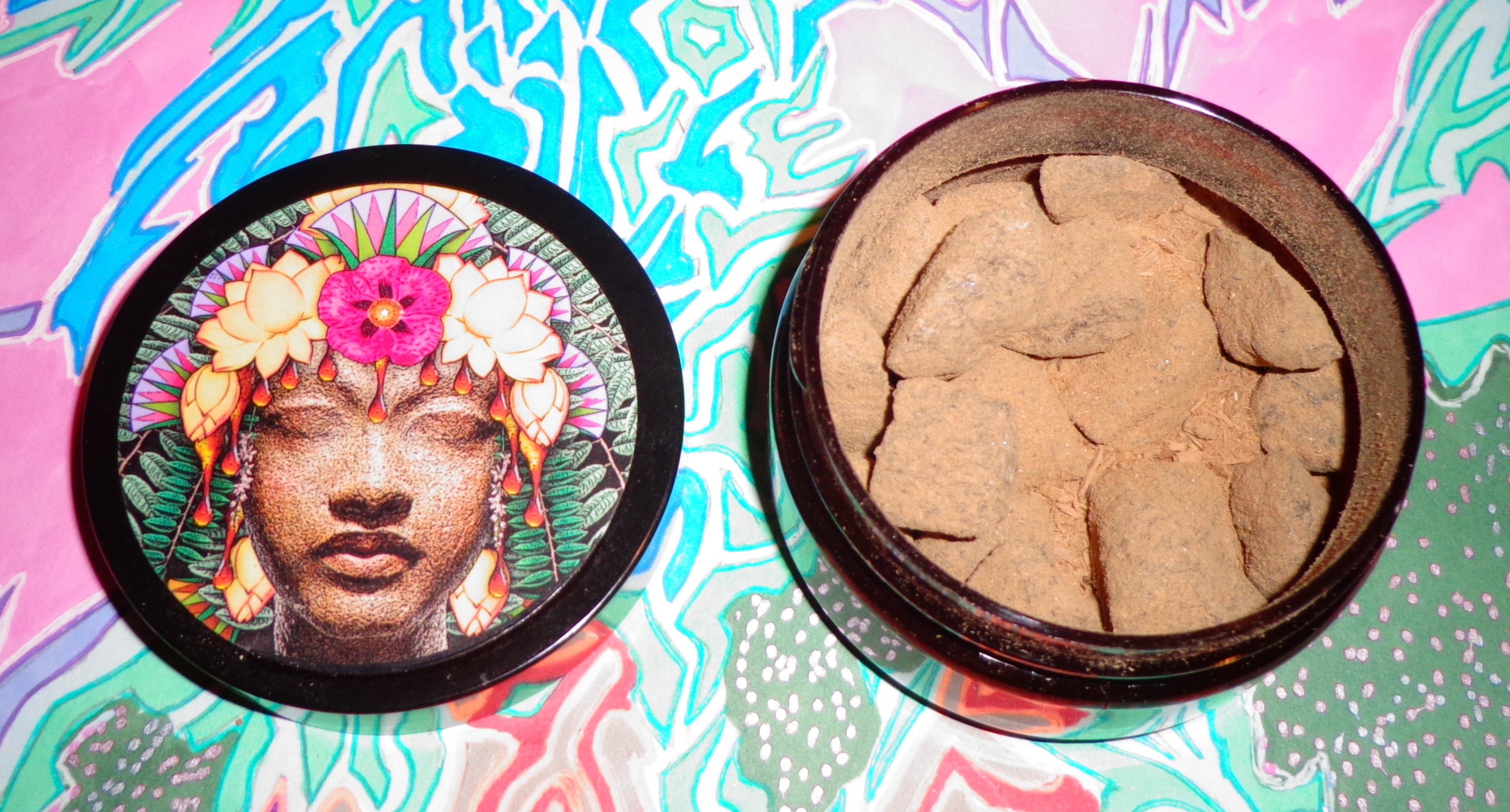 Reviewing a kyphi may not be as difficult as making one, but it’s a scent that is kind of hard to pin down. I’ve always used something like a fine wine or whiskey because the overall bouquet of a kyphi can be so rich and multi-faceted, usually with a distinct sense of age. It rarely feels like something you can just pick the elements out of, it’s more like the elements come together into something new. There are definitely similarities from one kyphi to another (usually for me it’s whatever the raisins and honey do, if they’re in there). However, I think this vintage,
Reviewing a kyphi may not be as difficult as making one, but it’s a scent that is kind of hard to pin down. I’ve always used something like a fine wine or whiskey because the overall bouquet of a kyphi can be so rich and multi-faceted, usually with a distinct sense of age. It rarely feels like something you can just pick the elements out of, it’s more like the elements come together into something new. There are definitely similarities from one kyphi to another (usually for me it’s whatever the raisins and honey do, if they’re in there). However, I think this vintage, 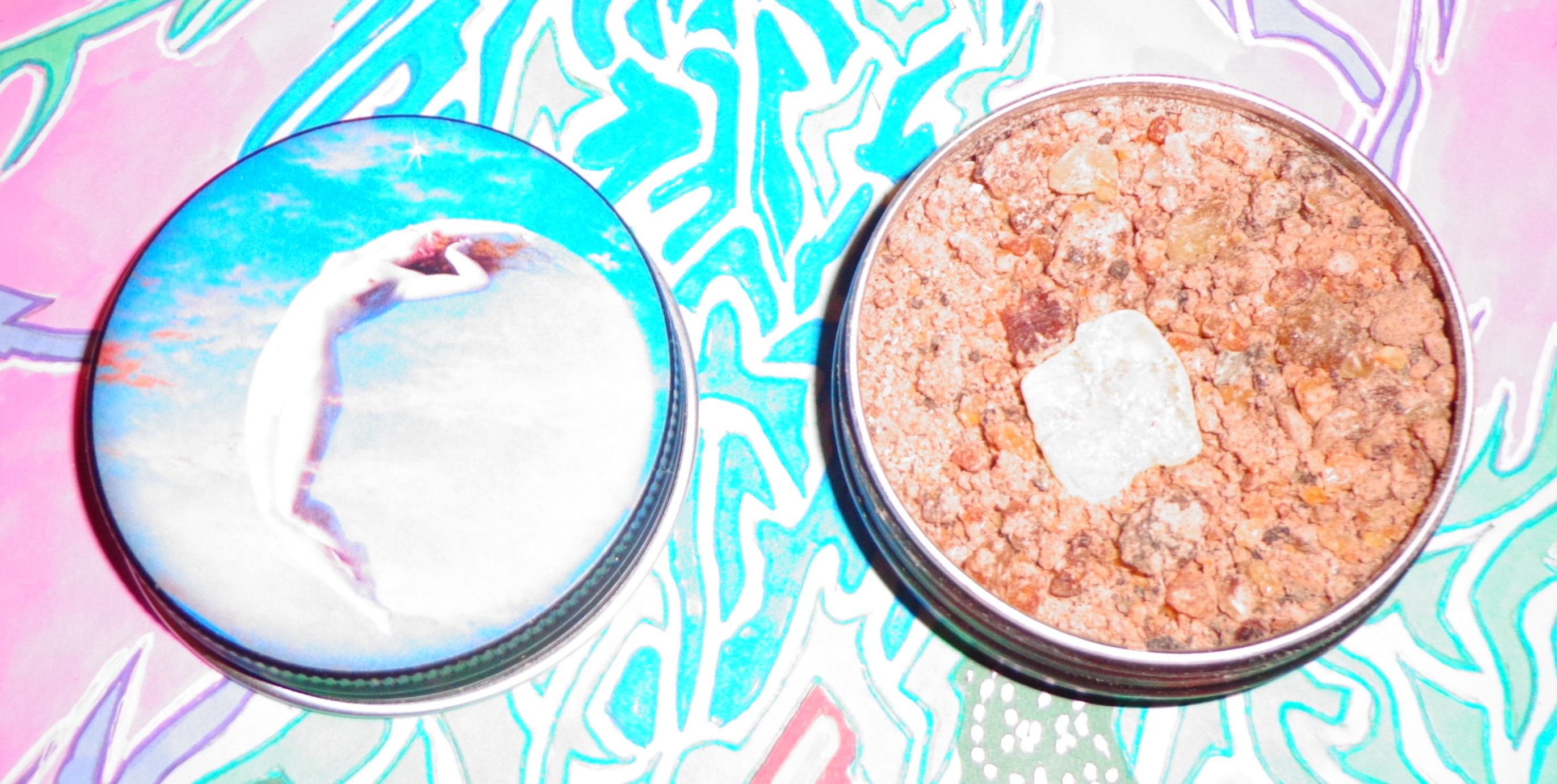 Katlyn has done a lot of what I would call lunar blends as well (Temple of the Moon, Mermade Moon, Moon Goddess, and Luna all come to mind). These have what I would call western magical correspondences about them, which means they tend to have some up front jasmine notes. Mermade has done a lot of fine work with jasmine and you may not be surprised that
Katlyn has done a lot of what I would call lunar blends as well (Temple of the Moon, Mermade Moon, Moon Goddess, and Luna all come to mind). These have what I would call western magical correspondences about them, which means they tend to have some up front jasmine notes. Mermade has done a lot of fine work with jasmine and you may not be surprised that  The Western tendency to create correspondences with Eastern spiritual systems seems largely a side effect of systems like the Golden Dawn where everything from colors to astrology signs to elements to Hebrew letters to tarot cards were lined up with one another to link things up and create one sort of universal spiritual system. This has long permeated new age culture and you can see it here in this seven incense chakra line where all the packages have different colors and so forth and the scents have been created to match up with each chakra, as if working with chakras was a simple as burning incenses and holding the right crystal. But hey, marketing right? (There’s a new Facebook ad equating using their groups as a method for transcendence that is currently annoying me, but I digress.) For sure the packages are quite nice on these, and if we can reference the many gems of the
The Western tendency to create correspondences with Eastern spiritual systems seems largely a side effect of systems like the Golden Dawn where everything from colors to astrology signs to elements to Hebrew letters to tarot cards were lined up with one another to link things up and create one sort of universal spiritual system. This has long permeated new age culture and you can see it here in this seven incense chakra line where all the packages have different colors and so forth and the scents have been created to match up with each chakra, as if working with chakras was a simple as burning incenses and holding the right crystal. But hey, marketing right? (There’s a new Facebook ad equating using their groups as a method for transcendence that is currently annoying me, but I digress.) For sure the packages are quite nice on these, and if we can reference the many gems of the  The
The 
 So, up to the solar plexus level with the
So, up to the solar plexus level with the 
 The “oriental woods and amber” of
The “oriental woods and amber” of  It’s hard to get enthusiastic about the jasmine and tulasi that matches up with the
It’s hard to get enthusiastic about the jasmine and tulasi that matches up with the  And finally we get to the crown chakra with the
And finally we get to the crown chakra with the
You must be logged in to post a comment.